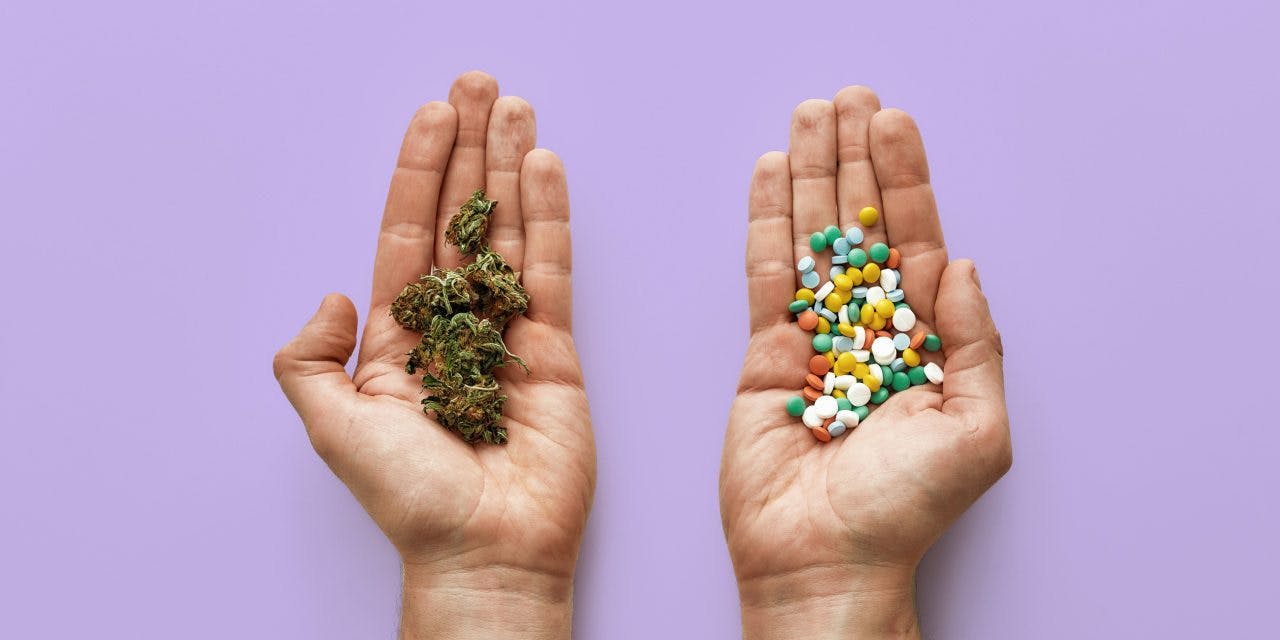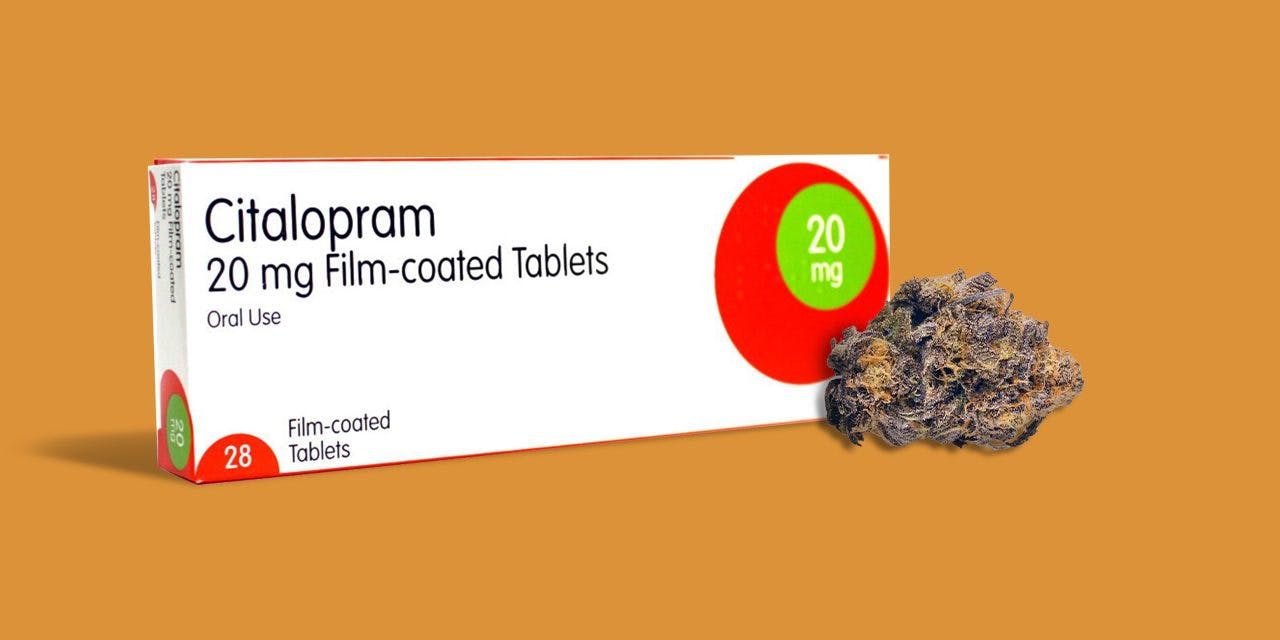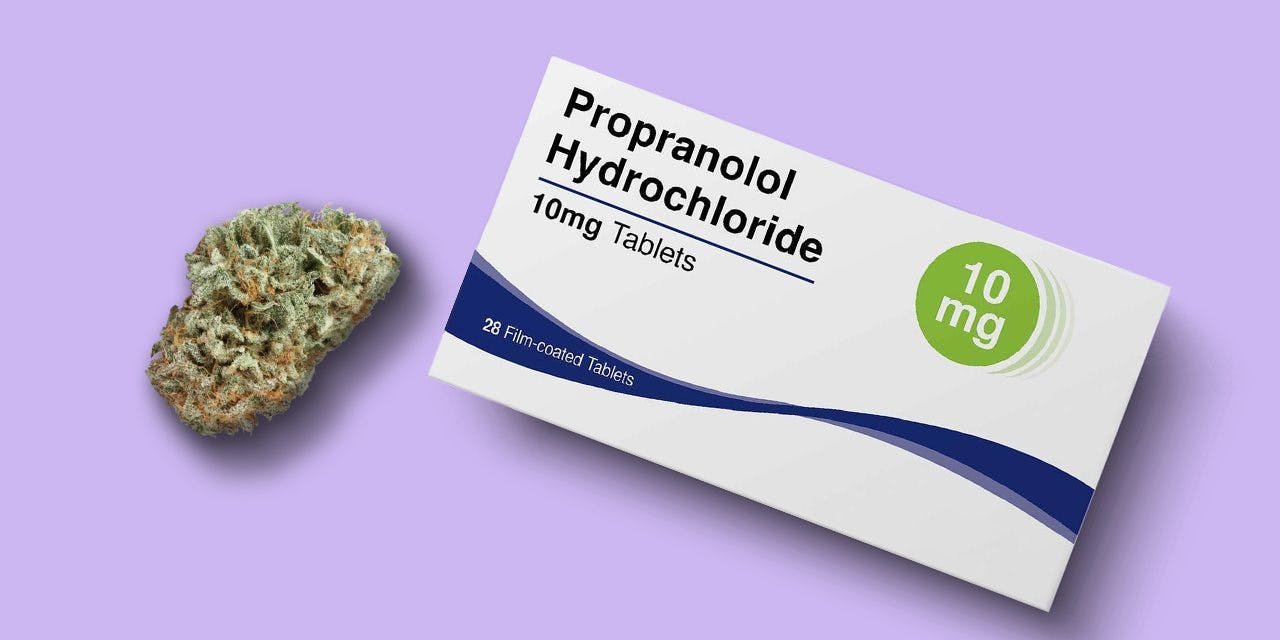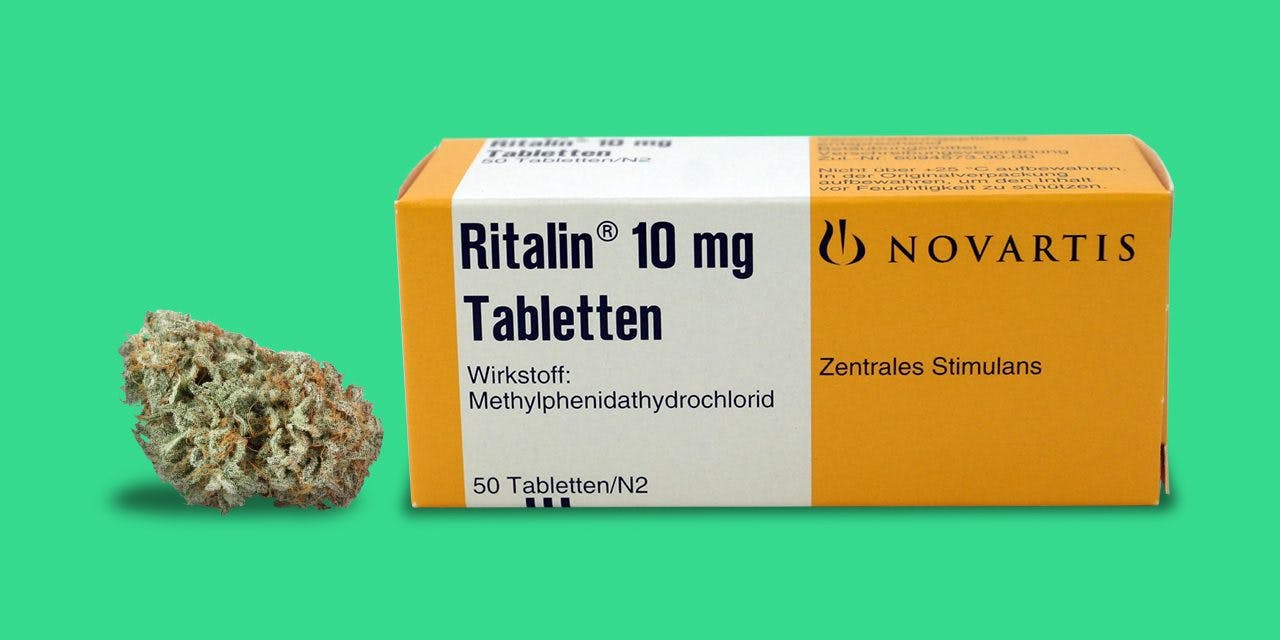Can You Mix Weed and Antibiotics?

Article written by

Meagan MorrisDirector of Content and SEO
Content reviewed by

Dr. Lewis JasseyMedical Director - Pediatric Medicine
If you’re taking antibiotics, marijuana use is generally safe in moderation. There is no evidence of any significant negative interaction or contraindication between cannabis and antibiotics. Some theories even suggest that cannabis may have antibacterial properties that can boost the effects of antibiotics.
With that said, no conclusive studies confirm these theories, and it is essential to consult with your healthcare provider before combining any medications, including cannabis, to avoid potential adverse reactions.
Get Your Medical Card
Connect with a licensed physician online in minutes.
What Are Antibiotics?
Antibiotics are medications for various bacterial infections, including respiratory, skin, and urinary tract infections. These drugs are ineffective against viral infections, like the common cold or flu, or other chronic health conditions.
There are several types of antibiotics, each targeting different kinds of bacteria in the human body. They’re prescribed based on the specific infection being treated. Some commonly prescribed antibiotics include:
- Amoxicillin
- Cephalexin
- Azithromycin (Z-Pak)
- Ciprofloxacin
- Doxycycline
- Cefdinir
Uses and How They Work
Antibiotics are classified into different categories based on what they do, their chemical structure, and their spectrum of activity. The most common antibiotics include penicillins, cephalosporins, macrolides, fluoroquinolones, tetracyclines, aminoglycosides, and sulfonamides:
- Penicillins: Penicillins help kill bacteria by breaking their cell walls, causing them to burst and die. They are usually used to treat infections from certain types of bacteria, like strep throat and staph infection. Some examples of these prescription antibiotics include amoxicillin, ampicillin, and penicillin G.
- Cephalosporins: Cephalosporins are similar to penicillins but can kill more types of bacteria and are often used to treat lung, skin, and urinary infections. Drugs such as cephalexin, cefuroxime, and ceftriaxone are examples of this kind of antibiotic medication.
- Macrolides: Macrolide antibiotics are often used to treat infections in the lungs, skin, and those spread through sexual contact. Some examples of this type of antibiotic medication include erythromycin, azithromycin, and clarithromycin.
- Fluoroquinolones: Fluoroquinolones are commonly used to treat infections in the urinary tract, lungs, and stomach. Some examples of fluoroquinolone antibiotics include ciprofloxacin, levofloxacin, and moxifloxacin.
- Tetracyclines: Tetracyclines are often used to treat skin problems like acne, breathing infections, and infections you can get from sexual contact. Some examples of tetracycline antibiotics include doxycycline, minocycline, and tetracycline.
- Aminoglycosides: Aminoglycosides are usually combined with other medicines to treat serious infections. Some examples of aminoglycoside antibiotics include gentamicin, tobramycin, and amikacin.
- Sulfonamides: Sulfonamides, or sulfa drugs, are often used to treat urinary tract infections, ear infections, and certain types of pneumonia. Some examples of sulfonamide antibiotics include sulfamethoxazole, sulfisoxazole, and sulfadiazine.
Potential Benefits and Risks of Mixing Cannabis and Antibiotics
Although there is no known interaction between antibiotics and marijuana, it is worth remembering that there hasn’t been an in-depth study into the combination of the two.
Potential Benefits
When combined with traditional antibiotics, cannabidiol (CBD) may enhance the effectiveness of these medications by working synergistically to combat bacterial infections.
The combination of CBD and antibiotics may be more potent than either substance alone, potentially leading to faster recovery times and a reduced risk of antibiotic resistance.
Cannabis has been shown to have antibacterial properties, particularly against gram-positive bacteria such as the methicillin-resistant superbug MRSA. Tetrahydrocannabinol (THC) and CBD have been found to exhibit these antibacterial effects, as has the terpene pinene, which can be found in some full-spectrum cannabis products.
Additionally, medical marijuana can help alleviate symptoms of the infection, such as pain and nausea, making the recovery process more comfortable.
Potential Risks
While there is little research on the direct interaction between cannabis use and antibiotics, some studies suggest that cannabis use may affect the immune system by dampening inflammatory responses.
This function can be helpful in health problems where inflammation is out of control (e.g., Crohn’s) but potentially makes it harder for the body to fight bacterial infections.
One of the ways CBD interacts with the body is by affecting the production of certain enzymes in the liver. These enzymes, specifically cytochrome P450 enzymes, break down and metabolize various substances, including medications like antibiotics.
When CBD inhibits the production of these enzymes, it can slow down the rate at which your body processes and eliminates antibiotics, meaning the antibiotic concentration in your bloodstream may remain higher than intended for longer.
Higher levels of antibiotics in your bloodstream can increase the risk of adverse effects. Depending on the specific antibiotic and the individual’s medical history, these side effects may range from mild (e.g., nausea or diarrhea) to more severe issues, like allergic reactions or organ damage.
Also, smoking cannabis while taking certain antibiotics for respiratory infections may further irritate the lungs and prolong recovery.
The Bottom Line
Combining marijuana with antibiotics may help alleviate some side effects of antibiotic medications, such as nausea and loss of appetite.
Additionally, the antibacterial properties of specific cannabinoids, like THC and CBD, may provide added benefits in fighting bacterial infections and reducing the likelihood of developing antibiotic-resistant bacteria.
However, it’s essential to consult with your healthcare provider before using cannabis alongside antibiotics to ensure the best possible outcome for your health.
Get Your Medical Card
Connect with a licensed physician online in minutes.
Frequently Asked Questions
Can you smoke weed on antibiotics?
Smoking weed is usually not a good idea when taking antibiotics because it could reduce the effectiveness or create more side effects.
Plus, smoking marijuana can make breathing harder, which could worsen your sickness, especially if it’s a lung infection. It’s always best to talk to a doctor or nurse before mixing drugs or medicines to ensure you stay safe.
Does CBD affect antibiotics?
CBD can inhibit your body’s cytochrome P450 system, a purification system near the liver responsible for metabolizing potentially dangerous toxins. This effect might impact how long it takes to process certain antibiotics and result in taking more or fewer antibiotics than required.
A study at the University of Westminster concluded that CBD could be positive in combination with antibiotics by preventing the body’s release of “membrane vesicles” (MVs). Bacteria utilize MVs to communicate with each other and trap antibiotics. CBD can stop that process by changing the membrane vesicles’ composition, cutting off bacterial communication, and helping antibiotics work better.
Dr. Sigrun Lange from the University of Westminster study said, “Our findings highlight that CBD application, in conjunction with antibiotic treatment, may be an interesting adjunct to the development of novel treatment to help reduce antibiotic resistance, especially given that antibiotic resistance is on the rise and predicted to be a global health disaster.”



